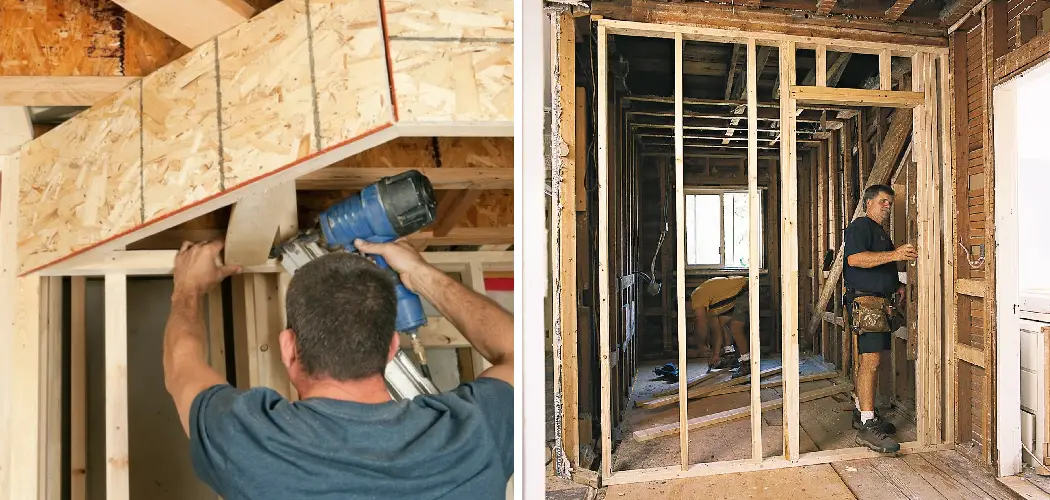Partition walls in finished basements provide more than just a visual division of space. It can help control sound, increase insulation, and even add structural support to the existing basement framing. This is especially important if you are using this partition wall to create separate living spaces, such as an extra bedroom or home office.
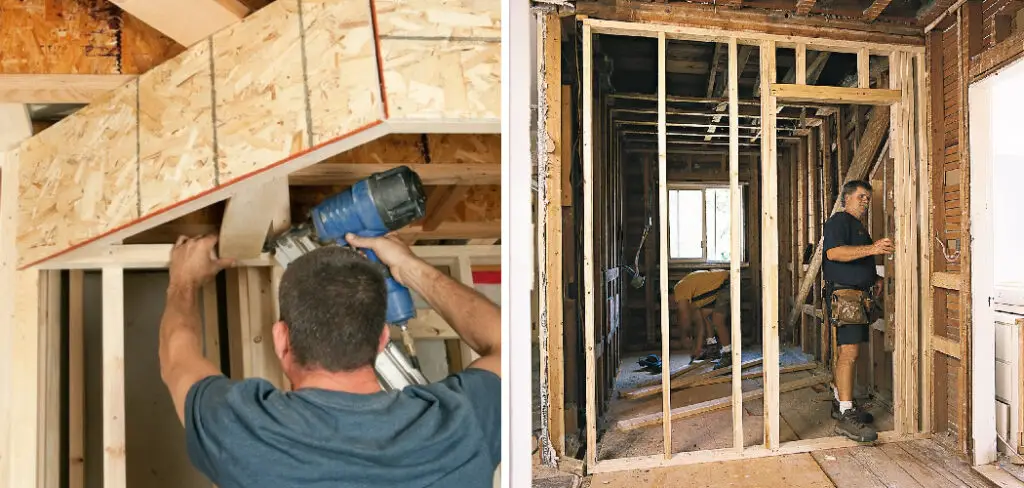
Building a partition wall in a finished basement has several advantages. The most obvious is that it provides privacy and can separate different parts of a basement into distinct areas. This can be beneficial when trying to maximize the space, as it allows for multiple uses within a single basement area. Additionally, it can provide extra insulation that helps warm the area in colder months. In this blog post, You will learn in detail how to build a partition wall in a finished basement.
Step-by-Step Processes for How to Build a Partition Wall in a Finished Basement
Step 1: Inspect Your Basement
Before you start, look around the basement to ensure there are no pre-existing obstacles. Look for any existing pipes or wires and avoid cutting into them. Calculate the dimensions of your partition wall and then mark its location on the floor with chalk. Make sure to double-check your measurements to avoid any mistakes.
Step 2: Lay Wall Foundation
In most cases, you will need to build a foundation for the partition wall that is made of concrete or cement blocks. Attach 2×4 studs along the length and width of the partition wall’s foundation will create the frame for the partition wall.
Step 3: Sheetrock Installation
Attach sheets of drywall to the 2×4 studs using drywall screws and a screw gun. Make sure to use screws that are long enough to penetrate through all layers of drywall. Use drywall tape to cover all the seams between the sheets of drywall; then, use a trowel to spread joint compound over each taped seam. Allow this mixture to dry before continuing with the next step.

Step 4: Sanding & Finishing
Once the mudded and taped wall is completely dry, a sanding block can create a smooth surface. Ensure to clean up after each step of the process, as drywall dust can be hazardous if left unattended. Before painting, prime the wall with an oil-based primer and allow it to dry completely. Then you can apply a coat of paint for the desired color and finish.
Step 5: Installing Trim
Attach trim pieces around any doors or windows in the wall to complete the look. Apply a sealant along all seams to ensure no air can escape the room. You can also use caulk around the partition wall’s edge to ensure it is completely airtight.
Following these steps will allow you to successfully build a partition wall in your finished basement and keep the area separated from other areas. Make sure to be extremely careful when working with tools and follow safety guidelines throughout the process.
Tips for How to Build a Partition Wall in a Finished Basement
- Use safety glasses and gloves when handling tools and materials.
- Ensure the area is well-ventilated by opening windows or using fans to prevent inhaling dust particles, volatile organic compounds (VOCs), and other pollutants created during the construction process.
- Wear a dust mask if possible to further reduce exposure to dust.
- Secure the shelves and other items in the area before construction to prevent them from falling.
- Be sure to turn off any electrical or gas lines near where you are working before beginning construction on the partition wall.
- Follow all instructions provided by the manufacturer when using power tools, including keeping a safe distance from any moving parts.
- Be sure to use proper safety techniques when lifting and carrying heavy materials, such as a partition wall. Use your legs, not your back, to lift and carry the load.
These tips can help you create a sturdy, effective partition wall in your finished basement while minimizing the risk of accidents and injury.
Is Using a Professional Contractor for Building a Partition Wall in a Finished Basement Recommended?
Hiring a professional contractor to build a partition wall in a finished basement is an excellent option if you’re looking to get the job done correctly and safely. Professional contractors have the experience, tools, and skills to build a partition wall meeting all current codes and regulations. They are also familiar with common construction materials and techniques used in making a partition wall.
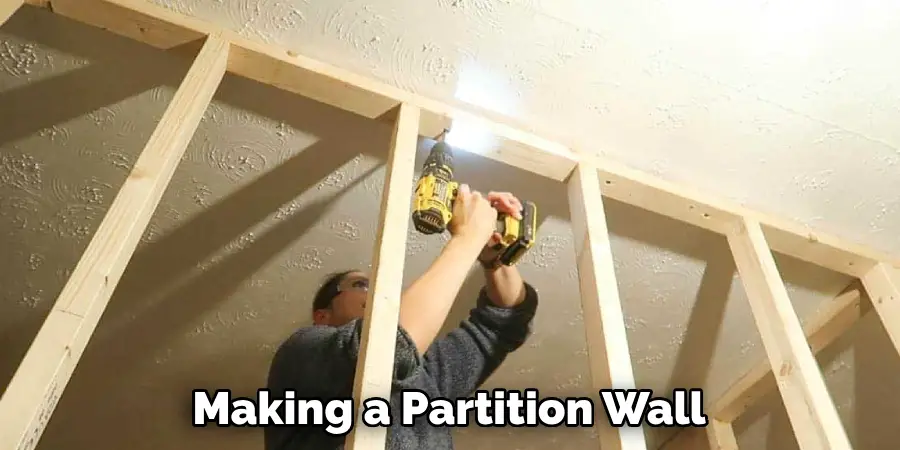
A contractor can help you create the appropriate design for your partition wall, discuss the necessary construction materials, and advise on how best to use the space in your finished basement. This includes options on insulation, soundproofing, fire safety considerations, and any other special features that might be needed.
A professional contractor can also provide a quote for the cost of your partition wall before work begins so that you can remain aware of any additional costs as the project progresses.
How Long Does It Usually Take to Build a Partition Wall in a Finished Basement?
Building a partition wall in a finished basement can be an involved process, but the timeline varies depending on several factors. The size of the room and the type of materials used will greatly impact how long it takes to complete the job.
Additionally, any unforeseen issues that arise can add extra time to the project timeline. Building a partition wall in a finished basement generally takes about 3-4 days. This timeline includes the time needed to plan out the project, purchase materials, and complete the construction of the wall.
If you are tackling this job as a DIYer, allow yourself extra time for unanticipated challenges that might pop up along the way. The first step to building a partition wall is to plan out the project carefully. Lay out the wall’s measurements and mark off where the studs will be placed on the walls.
Are There Any Maintenance Considerations That Should Be Taken Into Account When Constructing This Type of Wall?
When constructing a partition wall in a finished basement, there are certain maintenance considerations that should be taken into account. First, the walls should be constructed using materials designed for use in damp or wet conditions that will not corrode over time.
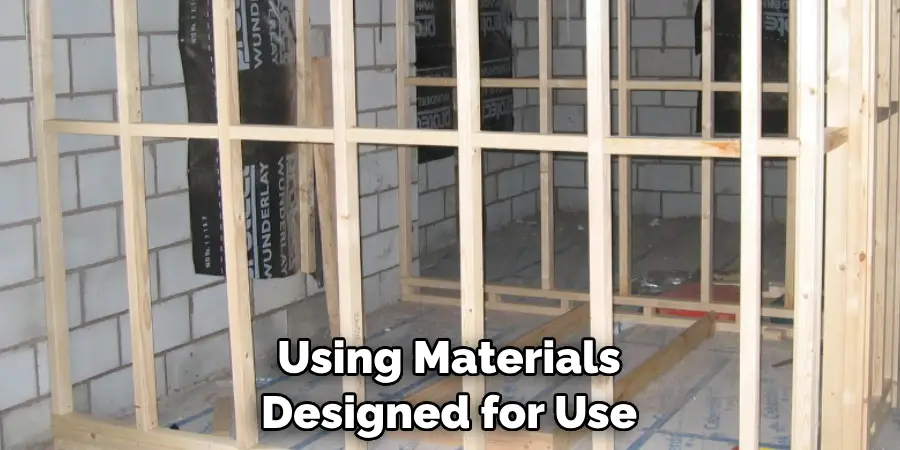
Additionally, it is important to ensure that any seams between the drywall and studs are properly sealed with a waterproof caulk to keep moisture from seeping into the underlying wall. Finally, be sure to check the walls regularly for signs of mold or mildew and address any issues as soon as possible. Taking these steps will help ensure that your partition wall remains in good condition over time.
When constructing the wall, it is also important to ensure that the studs are properly spaced and securely attached to the floor and ceiling. This will help increase the wall’s stability and reduce any potential for bowing or sagging in the future.
Additionally, it is important to use high-quality nails when attaching the drywall so that they remain firmly embedded in the wood over time. Taking these steps will ensure that your partition wall is properly constructed and will remain in good condition for many years to come.
Should Any Additional Insulation or Soundproofing Be Used in the Construction of the Wall?
When it comes to constructing a partition wall in a finished basement, several steps need to be taken to ensure that the job is done correctly. One of these steps involves deciding whether or not any additional insulation or soundproofing should be used during the construction process. The answer to this question largely depends on the purpose of the wall.
If the goal is to create a soundproof wall in order to reduce noise from one area of the basement to another, then it will be necessary to use insulation and soundproofing materials. This could include using drywall with insulation between two layers or foam boards that are designed specifically for soundproofing.
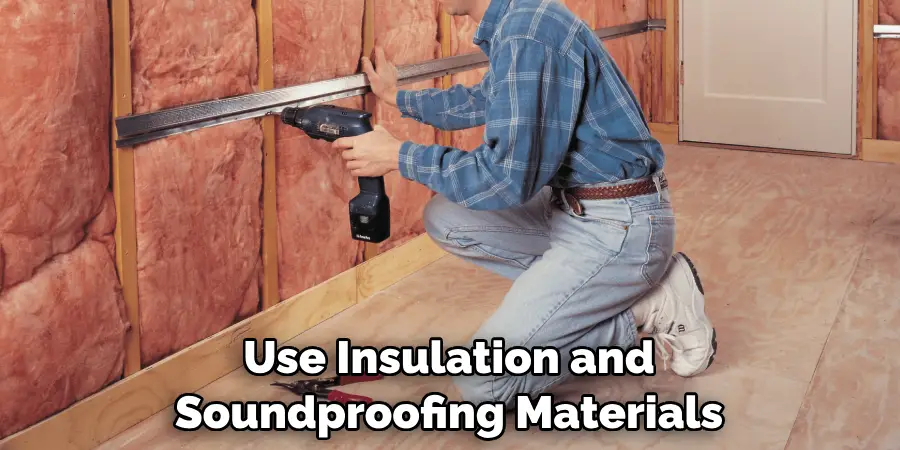
On the other hand, if the goal of the wall is to simply create a divider between two different rooms or areas in the basement, then additional insulation or soundproofing may not be necessary.
Conclusion
In conclusion, building a partition wall in a finished basement is an easy and cost-effective way to create more space and make better use of the area. Planning ahead, choosing your materials wisely, and having good measuring skills before starting are important.
Make sure to check local codes and regulations before beginning any construction work. Once you have taken the necessary steps, you will be able to start work and create a great space for an extra living area. I hope this article has been beneficial for learning how to build a partition wall in a finished basement. Make Sure the precautionary measures are followed chronologically.

